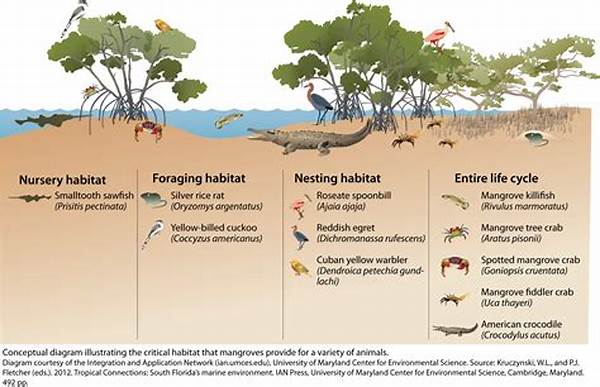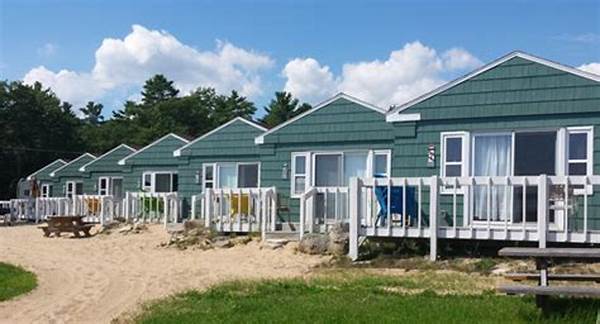Hey there, fellow nature enthusiasts! Today, we’re diving into a topic that’s close to the heart of our natural world: native species habitat integration. It’s a fascinating subject that involves ensuring our local wildlife has a home that supports their lifestyle and growth. Picture your backyard as a cozy neighborhood for plants and critters that have lived there long before we did. How cool is that? Now, let’s unravel the intricacies of native species habitat integration!
Read Now : Best Beaches For Families
Understanding Native Species Habitat Integration
Let’s break it down: native species habitat integration is all about making sure our ecosystems thrive by ensuring plants and animals have the right environment to call home. Under this umbrella, we’re not just talking about providing a space but crafting a living landscape wherein they can flourish. Imagine creating a safe harbor where native flora and fauna interact harmoniously. It’s about balance, equipping native species with the proper resources to live and reproduce while coexisting with humans. This practice helps combat challenges like habitat loss and biodiversity decline caused by urbanization and climate change. So, by prioritizing native species habitat integration, we can significantly boost local biodiversity and create an environment that supports ecological stability.
Native species habitat integration also concerns community involvement. By educating ourselves and implementing small changes in our lifestyle, such as planting native green or establishing nature-friendly zones in public spaces, everyone can partake in preserving our native species. Every small effort counts towards fostering an environment that encourages natural wildlife to thrive. Remember, native species habitat integration involves everyone stepping up and playing a part, no matter how big or small. It’s time to get involved and give back to the environment that offers us so much.
Benefits of Native Species Habitat Integration
1. Boosts Biodiversity: By focusing on native species habitat integration, we support ecosystems rich in diverse species. A win-win for the environment!
2. Natural Pest Control: Native species provide natural pest control, reducing the need for chemicals and pesticides.
3. Promotes Resilience: Native species habitat integration can make ecosystems more resilient to climate change and environmental disturbances.
4. Cost-Effective Landscaping: Incorporating native plants in landscaping saves water and maintenance costs, an often overlooked benefit of native species habitat integration.
5. Supports Cultural Heritage: Native species habitat integration can help preserve cultural heritage and identity associated with certain native plants and animals.
Implementing Native Species Habitat Integration
Getting started with native species habitat integration can be fun and rewarding! Begin by researching native plants and animals in your area. Dive into local biodiversity studies and identify which species need your help the most. By understanding their needs, you’re setting the stage for a flourishing environment. Consider integrating native species into your gardening practices. Swap out non-native ornamental plants for local flora. You’ll be amazed how quickly your garden will transform into a haven for native wildlife.
Another aspect of native species habitat integration is collaborating with local communities. When neighbors come together, the effort to preserve native species becomes a shared mission. Host garden workshops, volunteer for tree planting activities, and exchange ideas to foster a more robust sense of community. Even small steps such as making your backyard critter-friendly and setting up bird feeders contribute to the larger picture of habitat integration.
Read Now : Top Hotels Catering To Families
Factors Affecting Native Species Habitat Integration
Understanding the nuances of native species habitat integration includes looking at various factors affecting success.
Collaborative Approaches to Native Species Habitat Integration
Communities play a significant role in promoting native species habitat integration. By joining forces with local wildlife organizations, ecologists, and fellow residents, individuals can create a sustainable future for our beloved native species. The collaborative approach spreads awareness and boosts morale. Create informative workshops, initiate tree planting events, and assist in cleanup drives, which all contribute to a strong community bond.
Education is a powerful tool within native species habitat integration efforts. Teaching the younger generation about the value of preserving native flora and fauna instills a sense of responsibility and adaptability. Including informative signs in parks or natural reserves and encouraging local businesses to adopt eco-friendly practices are ways to integrate education in everyday life.
Challenges and Solutions in Native Species Habitat Integration
Despite the many benefits of native species habitat integration, challenges persist. Urban expansion and non-native species often crowd out native habitats. However, solutions exist! Plant buffer zones using native plants around newer developments to create safety zones. Encourage policymakers to establish protective measures and incentives for landowners adopting native species habitat integration principles.
Similarly, for individuals living in apartment buildings or urban settings, involvement is still possible. Using pots and planters for native plants on balconies can encourage insect pollination and set an example for others. Even a small green space can have a profound impact.
Summarizing Native Species Habitat Integration
To wrap things up, native species habitat integration creates an enriching environment where local wildlife flourishes, presenting a harmonious coexistence between humans and nature. With community-driven efforts and a commitment to preserving native species, we can pave the way for sustainable and nature-friendly living.
Efforts towards native species habitat integration need to be inclusive, with everyone playing their part. Let’s unite and create ecosystems that benefit our current and future generations, keeping the spirit of conservation alive. It’s time to start small and dream big while working hand in hand for a more harmonious world.



